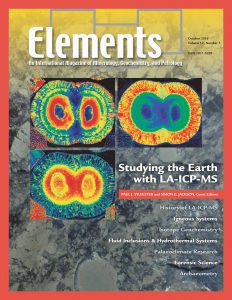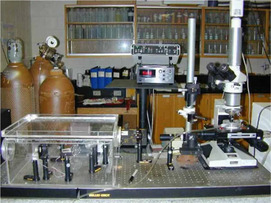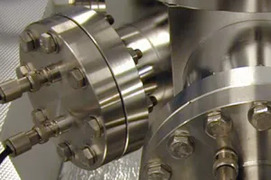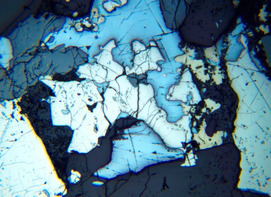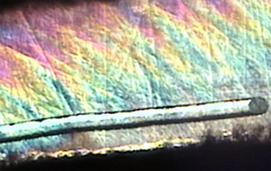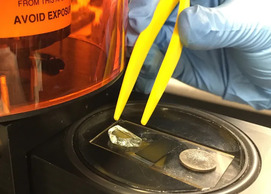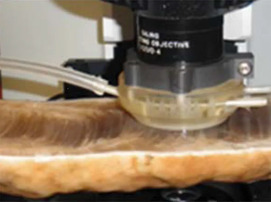
Studying the Earth with LA-ICP-MS
Paul J. Sylvester and Simon E. Jackson – Guest Editors
Table of Contents
Laser ablation inductively coupled plasma mass spectrometry (LA–ICP–MS) is a micro-analytical technique that has allowed significant research advances in many areas of the Earth sciences. The method produces quantitative elemental and isotopic analyses on the micrometer scale of most solid, and some liquid, materials across most of the periodic table. Because both inorganic and organic materials can be analyzed, abiotic and biotic processes, and their interactions, can be studied. This issue of Elements highlights applications of LA–ICP–MS across the broad range of disciplines of interest to the Earth, environmental, and biological sciences.
Analab
Australian Scientific Instruments (ASI)
Cameca
Elemental Scientific, Inc. (ESI)
Excalibur Mineral Corporation
Geochemist’s Workbench
11th International Kimberlite Conference
National Electrostatics Corp. (NEC)
Overburden Drilling Management (ODM)
PANalytical
Periodico di Mineralogia
ProtoXRD
Savillex
Selfrag
TOFWERK
Volume 12, Number 6 (December) • The Origins of Life: Transition from Geochemistry to Biogeochemistry
GUEST EDITORS: Nita Sahai and Hussein Kaddour
How life originated is one of the most important, and longstanding, questions that humans have attempted to answer, as reflected in our mythologies, religions, philosophy, and science. Furthermore, our understanding of the emergence of life on Earth could potentially contribute to the search for life in other parts of the Solar System and the rest of the Universe. The objective of our thematic issue is to highlight the potential role of minerals and the critical importance of using relevant conditions, plausible on early Earth, for designing experiments to model the emergence and early evolution of life. We believe that this approach is essential to bridging the gap in the field between biochemists/organic chemists, on the one hand, and geochem-ists/mineralogists, on the other.
- Earth Sciences for Cultural Heritage (February 2016)
- Enigmatic Relationship Between Silicic Plutonic and Volcanic Rocks (April 2016)
- Cosmic Dust (June 2016)
- Geologic Disposal of Radioactive Waste (August 2016)
- Studying the Earth using LA-ICPMS (October 2016)
- Origins of Life: Transition from Geochemistry to Bio(geo)chemistry (December 2016)
Download 2016 Thematic Preview
- How Volcanoes Work (February 2017)
- Sulphides (April 2017)
- Coatings on Rocks and Minerals: Records of Climate Change, Atmospheric Pollution, and Organic Life (June 2017)
- Mineral Resources and Sustainable Development (August 2017)
- Boron: Light and Lively (October 2017)
- Layered Intrusions: Cumulates and Controversies (December 2017)


